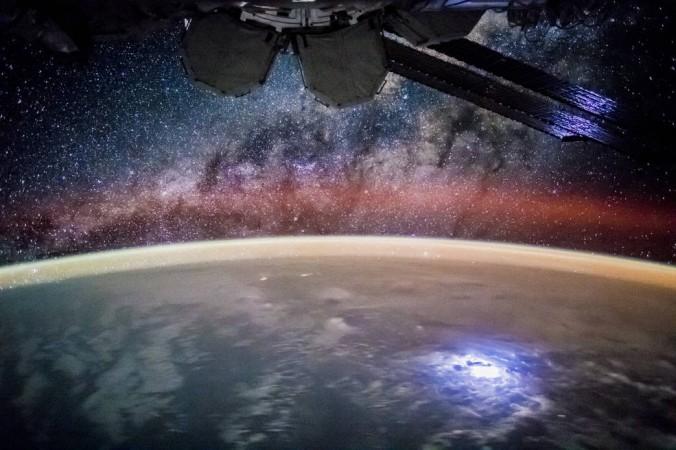
NASA will once again study Earth's lightning from a unique stake-out at International Space Station (ISS) using Lightning Imaging Sensor (LIS).
Also Read: NASA's Space Poop Challenge: And the WINNERS are...! [VIDEO]
The LIS is an advanced lightning exploring instrument launched in 1997. The device can gauge the optical characteristics, rate, amount and energy of the lightnings over Earth.
As per a NASA statement, a lightning flash occurs 45 times per second on Earth. Improved understanding of lightning will provide crucial insight into weather forecasting, climate change, atmospheric chemistry and physics, and aircraft and spacecraft safety.
The Earth scientists from the agency's Marshall Space Flight Center in Huntsville, Alabama, along with the researchers from the University of Alabama, Huntsville are looking forward to the new mission.
The new LIS is headed to the ISS for a two year mission to get a better read on the phenomena.
The previous LIS was first used in a succesful space mission called the Tropical Rainfall Measuring Mission (TRMM). TRMM satellite's orbit only carried LIS over locations on Earth between 35 degrees north and 35 degrees south latitudes. Though the mission collected data about tropics in abundance, LIS couldn't gather enough information about poles, temperate zones and other densely populated areas far from the equator.
"The LIS used in this follow-on mission is an exact duplicate of the sensor used on TRMM," said Richard Blakeslee, science lead for the LIS at NASA Marshall. "But it will sample lightning over a wider geographical area," a NASA statement reported.
The information from LIS could be used to carry out researches in data-sparse areas like oceans.
"LIS on the space station will also provide important cross-sensor calibrations, especially for the new Geostationary Lightning Mapper, an instrument based on LIS design heritage that is flying on NOAA's recently launched GOES-16 satellite," a NASA statement quoted.
This would aid in providing real-time awareness, forecasts and warnings about the weather globally, through a partnership with NASA's Short Term Prediction Research and Transition (SPoRT) Center in Huntsville.
"The space-based vantage point allows us to observe all forms of lightning over land and sea, 24 hours a day," said Blakeslee. "The orbit of the space station will allow LIS to look at lightning distributions over different times of the day, further enhancing our knowledge of the complicated dynamics of lightning," NASA quoted
The LIS launch will take place on the tenth cargo resupply mission of SpaceX on Saturday, February 18. The LIS data would aid the researchers in better weather predictions about tornadoes, storms and other natural disasters.









